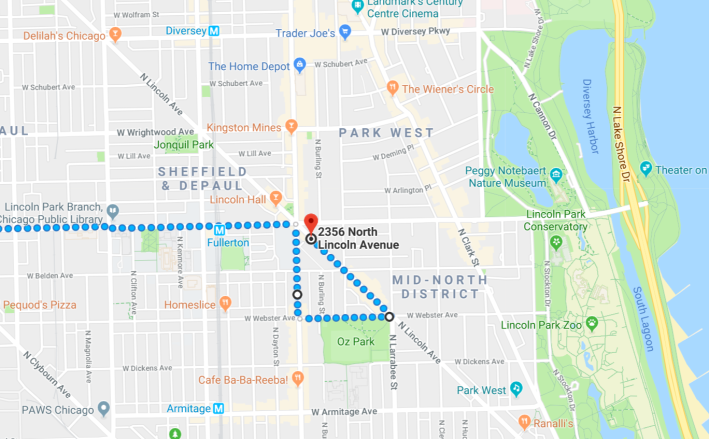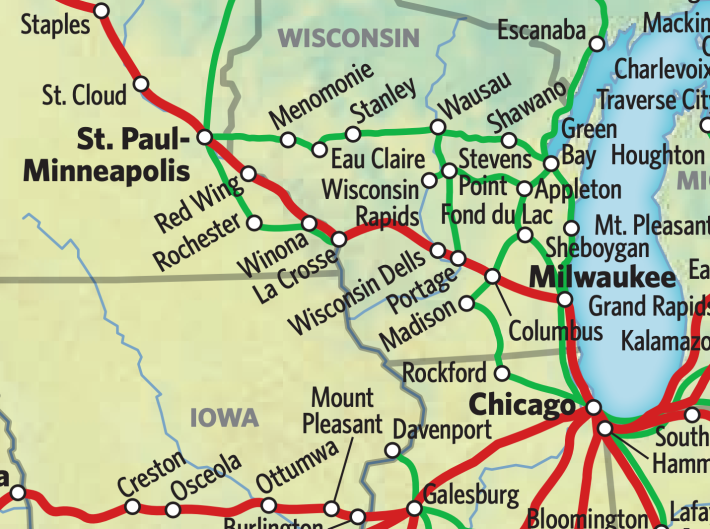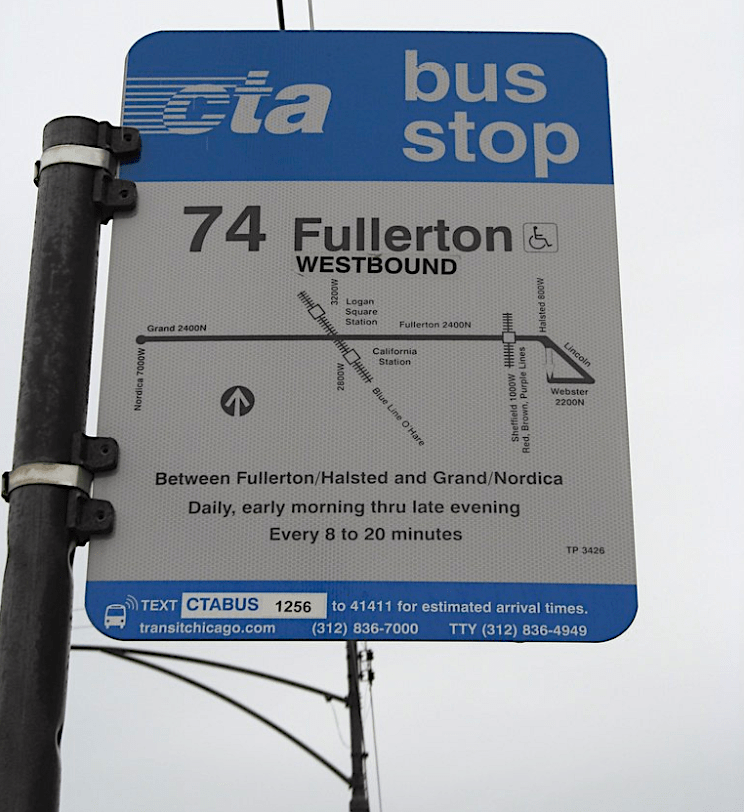
This article is part of our new weekly Q & A feature, “The Chicago Transportation Authority,” presented by Keating Law offices. Send us a question that you want answered via email (jgreenfield[at]streetsblog.org) or a tweet (@streetsblogchi). You can also post a query in the comment section of this article or on our Facebook page.
Why doesn’t the #74 Fullerton Bus operate east of Lincoln Avenue to connect with Clark Street, Lake Shore Drive corridor bus service, or Lincoln Park? –D.J.
Good question. I’ve often wondered myself why the #74 isn’t an option for getting from neighborhoods like Belmont-Cragin, Hermosa, and Logan Square to the Lakefront Trail and beaches.
As it stands, the Fullerton bus starts at Nordica Avenue (7000 W.), heads east to Halsted Street (800 W.), south to Webster Avenue (2200 N.), east to Lincoln at Larrabee Street (600 W.), and then northwest on Lincoln to Halsted again before returning west. That means it never takes you within a mile walk of the lake.

“CTA personnel routinely analyze ridership and service levels to look for the most effective ways to serve Chicago and the surrounding communities,” said spokeswoman Irene Ferradaz when I asked about this. “Every decision we make about CTA service has one goal in mind: Providing our customers with the best service that is affordable, reliable, safe and convenient.”
“Service planning is a complex process,” Ferradaz added. “When analyzing service, among the myriad elements that factor into any decision made, CTA planners must look at the route in its entirety, not just the area where a modification would occur. They must also look at any potential impacts a route modification could have other routes serving the area.

Ferradaz noted that the #74 is one of CTA’s longer east-west bus routes, and its service zone is in the top 1 percent densest in the city. “Traffic congestion and limited turnaround space east of Halsted are key factors in CTA’s decision to continue to maintain the current routing and avoid major impacts to the rest of the route or others nearby,” she said. “As with all its service, CTA continues to analyze service levels and explore ways to best serve the needs of the riding public.”
She’s got a point about congestion. East of Halsted, Fullerton becomes a picturesque-but-narrow two-lane street where traffic jams are the norm. There’s so little extra room on the road that I don’t even like biking down this stretch, so it’s no wonder that the CTA doesn’t want to run buses down it.

Why isn’t there Amtrak service from Chicago to Madison, Wisconsin? The Empire Builder line goes from Chicago to Milwaukee to the Twin Cities on its way to the Pacific Northwest, so wouldn’t it have made sense to have the route go through the second-biggest city in Wisconsin on the way from Milwaukee to Minnesota? –JG
“In the mid-1800s when Milwaukee business interests financed construction of the predecessor of the Milwaukee Road [aka the Chicago, Milwaukee, St. Paul and Pacific Railroad], Saint Paul was the goal,” according to railroad professional who asked to be anonymous. “Madison wasn’t on the way and was of no industrial or agricultural interest.”
Eventually, branch lines were built to Madison from both Milwaukee and Chicago, he said. Madison had a daily passenger train to and from Chicago at the tail end of private operation, just before Amtrak was created.
“There was an internal battle within the Nixon administration between the federal Office of Management and Budget versus the then-new U.S. Department of Transportation during the establishment of Amtrak,” the railroad professional said. “Some wanted an expansive initial system, but the bean-counters wanted a VERY truncated system. The system we have now is the compromise that left off many routes like Madison-Chicago, Cleveland-Cincinnati, etc.”
Madison was not included on the Milwaukee Road’s mainline between Chicago and the Twin Cities so it was left of the map. “Routes that were not included are impossibly hard to get back now because of railroad opposition, money, and/or politics,” the railroad man said. However, he ended with a note of optimism that there may once again be rail service to Madison. With a new Democratic governor [Tony Evers] in office, there’s new interest in this on the part of the state.
This post is made possible by a grant from the Illinois Bicycle Lawyers at Keating Law Offices, P.C., a Chicago, Illinois law firm committed to representing pedestrians and cyclists. The content is Streetsblog Chicago's own, and Keating Law Offices neither endorses the content nor exercises any editorial control.





